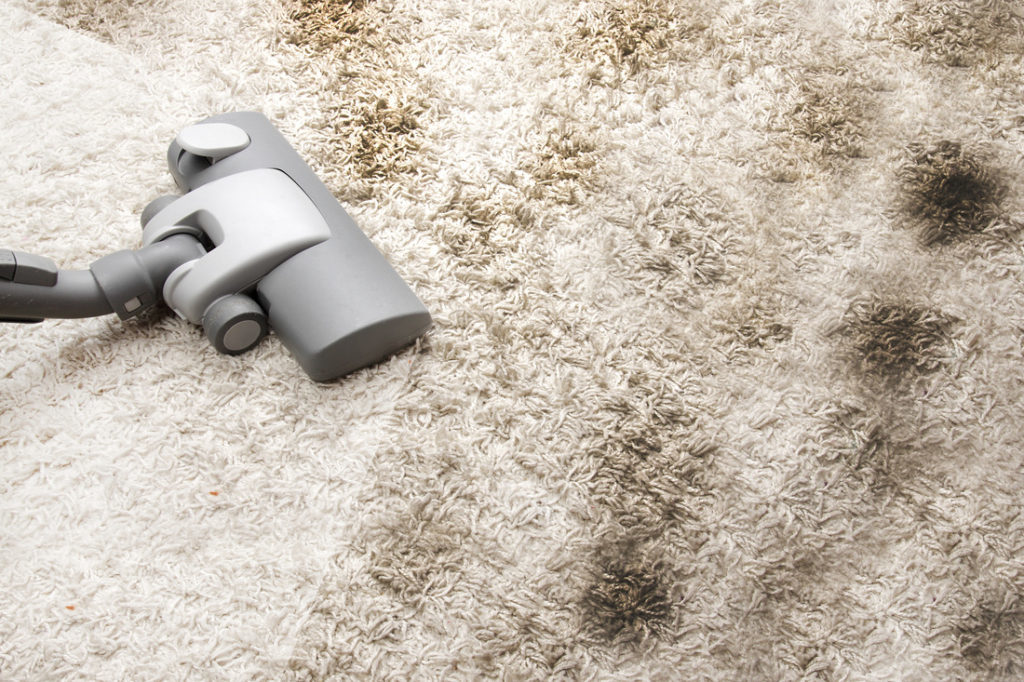What is the average lifespan of Carpet in your home?
When you start to shop for carpet, you will notice that the large selection of styles and brands to choose from can be overwhelming. It might seem like carpets are created equal and seem similar, but different styles of carpet last for different amounts of time. This has to do with the density and types of fibers that are used to make the carpet. Inexpensive, apartment-grade carpet will typically last anywhere from 1 to 5 years. A medium-grade carpet will last between 5 to 15 years. The best of the best carpet on the market will last between 15 and 25 years on average.
There are several factors that can affect how long your carpet lasts, whether it’s where you live, who you live with, or what you do in your home. But even carpet under the most trying of conditions can last many years, with the right carpet maintenance. In the average household of about 2-4 residents, carpet lifespan is usually about 3-5 years. It is by this point that most carpet fibers become old and frayed. Stains will also have sunk in, turning what started out as a pure white carpet into something graying and dull. This is why apartment owners and most homeowners change out their carpets every 3-5 years, due to discomfort and degrading visual quality of the current carpet.
What determines the lifespan of carpet in your home?
If there are children or pets living in the household with the carpet, this number can go even lower. Children and animals both are known for the stains they cause, and animals especially can fray and tear up the carpet they take residence on with their claws. So if you’re living in a home with either children or animals, then proper carpet care is even more essential.
Care & Maintenance
Proper carpet care changes everything though. As mentioned, with proper carpet maintenance, many years can be added to the average carpet lifespan, and some households can even keep their carpet for a decade before replacing their carpet flooring. Vacuuming is a necessity, with low traffic areas like a bathroom or closet needing to be vacuumed every 2-3 days; for the greatest longevity for your carpets, high traffic areas like hallways or living rooms should be vacuumed daily.
For treatment of stains, the rule of thumb is the faster the better. Most carpets nowadays have been treated to resist stains better, and show them more clearly so as to make them easier to spot and clean up. However, even with new stain treatments you have to work fast, because the longer a stain sits, the more permanent damage is caused to your carpet. Dab the stain with a white cloth or towel, and then look up proper treatment for the specific stain–Remember, each are different!
Carpets life can last as little or as long as you want, and as long as you treat your carpet well and keep it clean, it can be there for a long time.
How do I know if I need a new carpet?
In relation to all of this, it’s useful if you’re aware that your carpet has run its course and needs replacing. This can stop you from going years with an ugly carpet, and get your hands on something more updated and durable.
A key thing to look for is general wear and tear. Are there loads of rips in your carpet with the fibers showing and the main surface no longer visible? Not only that but does it feel a lot rougher than and not as soft as it used to? These are both signs that a new carpet is needed, and you should start looking for it right away.
Along with this, be on the lookout for bad smells and stains that won’t go away. Have you tried cleaning your carpet using many different methods, only to still see stains showing through? This is a sign that you’ve got a permanent stain and a new carpet is on the agenda.
